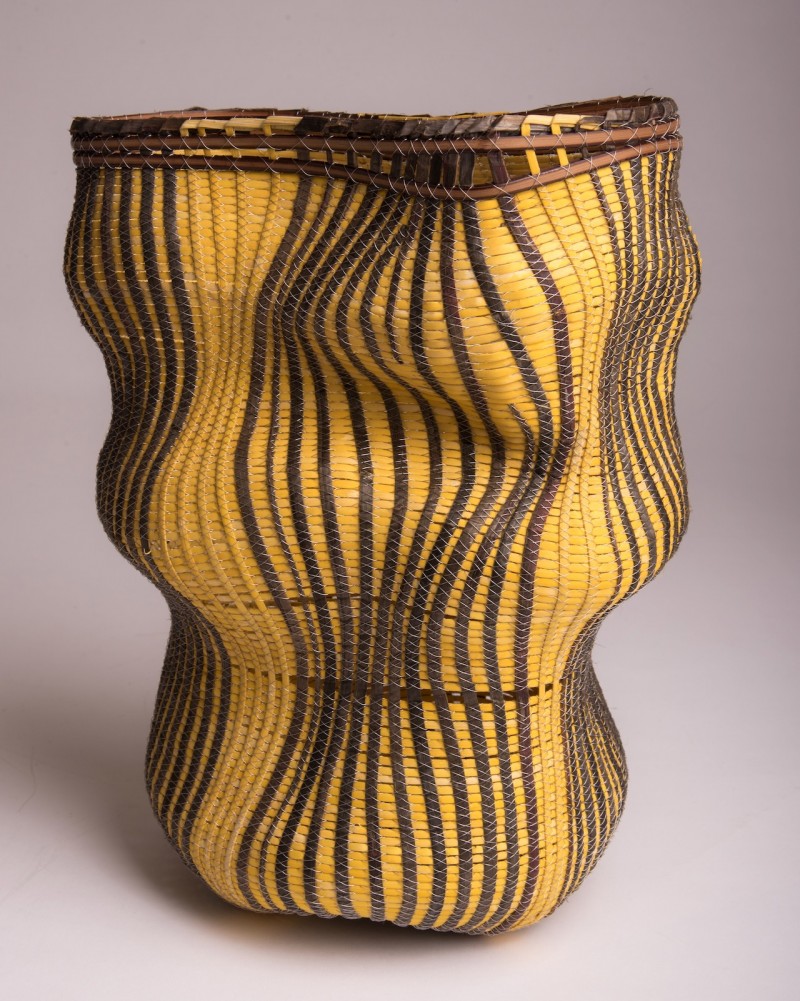“The work begins when I have located a logging source where, with permission, I can harvest inner bark from the Western Red cedar trees. The outer bark is split off in the woods and I bring home several coils of fresh cedar bark. After it dries and seasons, it is resoaked, split and cut for the appropriate piece. The ideal setting is when I can set the dried bark outside to be reconstituted in the rain. This is the perfect way to begin to weave.
There is no preconceived notion as to the purpose of my sculptural shapes, except perhaps, a quest for pleasing curvilinear forms. I cut lengths of cedar with either big or small in mind. Once the size of the base is determined and woven, the shape evolves as the work progresses. I keep an eye on this evolution and try to control it with the use of the tension in the material I am twining with, which is commonly wire. The cedar bark, when damp, has an impact on the shaping, as it is very pliable when soaked.
In this compilation of pieces the cedar rims are suspended outward, forming visually connecting edges, held in place by the rigid quality of the spruce root borders.”
Sutton’s museum collections include: Arizona State University Art Museum, AZ, Museum of Fine Arts, Boston, MA, Racine Art Museum, WI, Michigan State University Museum, MI and Edmonds Art Museum, WA.
| Materials | Dyed black cedar, yellow cane |
|---|---|
| Dimensions | 12″ x 8″ x 7″ |






